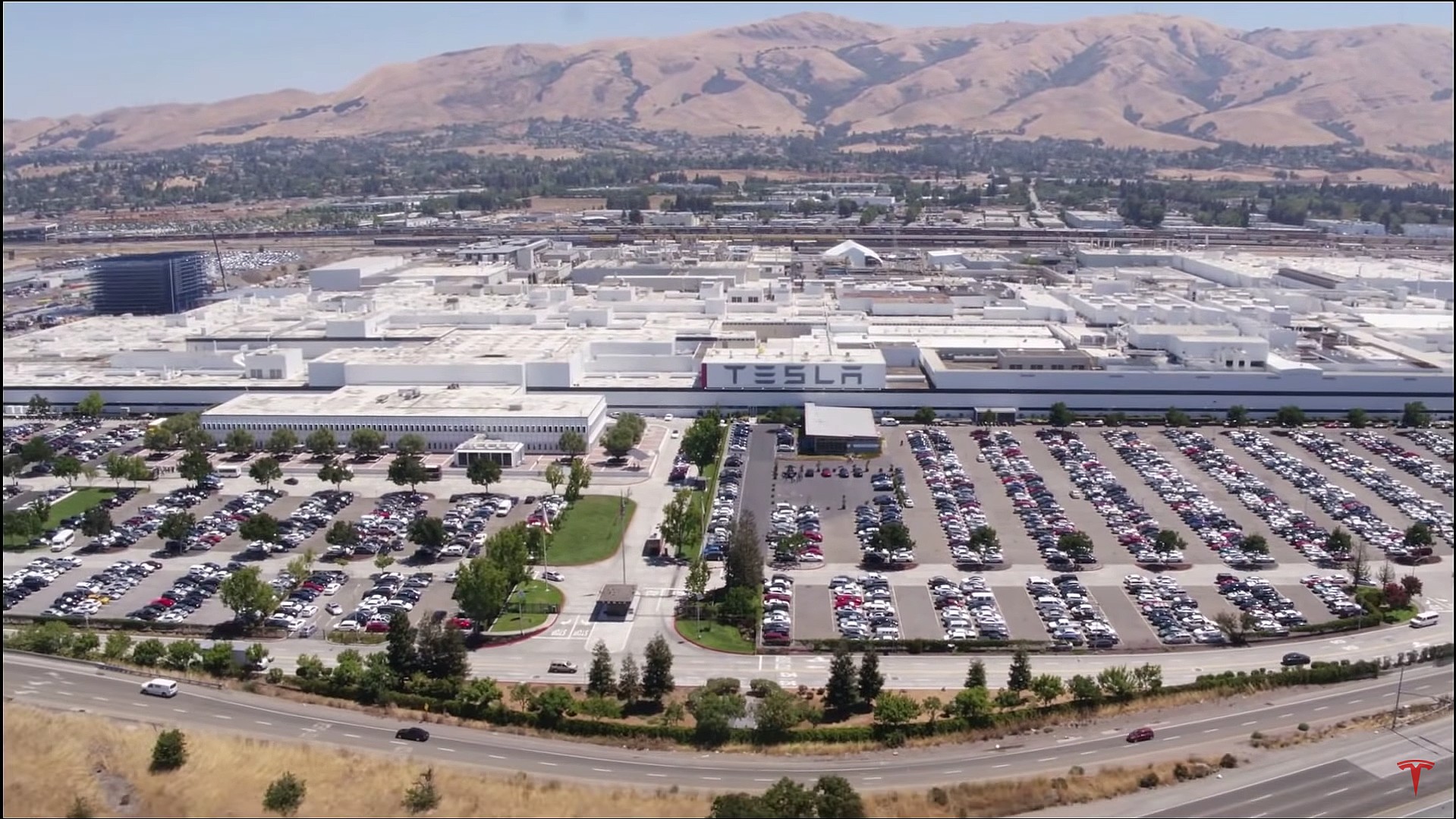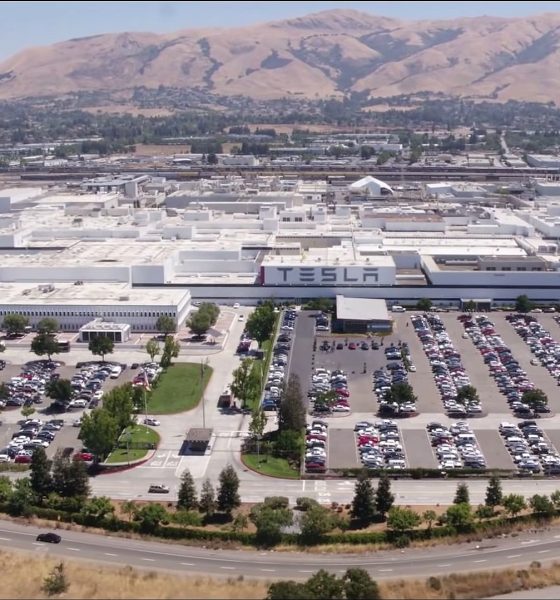

News
Tesla Fremont factory reopening defended by county officials: ‘TSLA has not been given an exception’
Tesla’s situation at the Fremont facility has been clarified by Alameda County health officials, who published their response to questions they have received from the media. The updated information from the county was posted in a press release that was published on Wednesday night.
Tensions between Tesla and Alameda County came to a head recently after the company was set to reopen at with “limited operations” last Friday under conditions that were mandated by California Governor Gavin Newsom. However, Alameda County health officials prohibited Tesla from reopening its Fremont plant on May 8.
Under the leadership of CEO Elon Musk, Tesla reopened the Fremont factory on Sunday, May 10, against the wishes of county health officials. Media members asked several questions about why Tesla had not been penalized for not listening to instructions. This was explored in one of the inquiries asked by members of the media.
On Monday, Elon Musk tweeted that “Tesla is restarting production today against Alameda County rules. I will be on the line with everyone else. If anyone is arrested, I ask that it only be me.” Given that the CEO acknowledges that production has restarted against the county health order’s guidelines, why does your statement indicate that there may be a “possible reopening next week”?
Alameda County officials responded to this inquiry by clarifying that Tesla is operating above basic minimum operations due to the nature of the auto industry, which requires a lead-up period before production facilities could return to normal operations.
“We have met with Tesla representatives and have confirmed that Tesla is not engaged in full operations, contrary to media reports. Tesla has confirmed that its operations require a substantial lead time to become fully operational, and their current operations are only slightly above Minimum Business Operations. The City of Fremont Police Department – which had done multiple site-visits at the plant over multiple years, and which has knowledge of what Tesla’s normal operations look like – will conduct a site visit today to confirm Tesla’s claims.
“Given the unique nature and scale of automobile manufacturing and the safety measures agreed to by Tesla, we concluded that ramp up activity with a minimal increase in minimum basic operations can occur safely.”
Earlier reports indicated that Tesla’s employee parking lots in Fremont might have been just as occupied on Sunday and Monday as it was for a typical work shift. However, Alameda County officials clarified that the facility was only operating under conditions that were slightly above minimum basic operations. This action is due to “substantial lead time to become fully operational,” the county explained.
Another question suggested that Tesla received special treatment from Alameda County. CEO Elon Musk stated earlier this week that the facility was reopened despite the county’s stance. No disciplinary action was taken by the County, and journalists wanted to know why. This was addressed in an inquiry from a member of the media.
“Given that Tesla has been given an exception, what does that do to the moral authority of the County when other businesses try to open before they’re allowed? I think the question of equal enforcement of the law is an important public policy issue.”
Alameda County officials clarified that Tesla had not received any sort of preferential treatment and that Tesla’s safety plan was clear enough to indicate that it was safe to begin production as early as next week.
“Tesla has not been given an exception. The role of the Public Health Department is to protect our residents and the individuals who come to work in Alameda County. We do that by reviewing safety plans and working with local law enforcement, who hold the authority to enforce the Health Officer Orders. We hope and expect that other businesses see the value of continuing to abide by the Health Officer Order, as it applies to them, in order to protect their workforce, our most vulnerable residents, and our health care systems in general. Because of the hard sacrifices of our local businesses, we anticipate another phase of reopening as early as next week.”
The full Press Release from Alameda County could be accessed in full below.
press-release-2020.05.13 by Simon Alvarez on Scribd

News
Man credits Grok AI with saving his life after ER missed near-ruptured appendix
The AI flagged some of the man’s symptoms and urged him to return to the ER immediately and demand a CT scan.

A 49-year-old man has stated that xAI’s Grok ended up saving his life when the large language model identified a near-ruptured appendix that his first ER visit dismissed as acid reflux.
After being sent home from the ER, the man asked Grok to analyze his symptoms. The AI flagged some of the man’s symptoms and urged him to return immediately and demand a CT scan. The scan confirmed that something far worse than acid reflux was indeed going on.
Grok spotted what a doctor missed
In a post on Reddit, u/Tykjen noted that for 24 hours straight, he had a constant “razor-blade-level” abdominal pain that forced him into a fetal position. He had no fever or visible signs. He went to the ER, where a doctor pressed his soft belly, prescribed acid blockers, and sent him home.
The acid blockers didn’t work, and the man’s pain remained intense. He then decided to open a year-long chat he had with Grok and listed every detail that he was experiencing. The AI responded quickly. “Grok immediately flagged perforated ulcer or atypical appendicitis, told me the exact red-flag pattern I was describing, and basically said “go back right now and ask for a CT,” the man wrote in his post.
He copied Grok’s reasoning, returned to the ER, and insisted on the scan. The CT scan ultimately showed an inflamed appendix on the verge of rupture. Six hours later, the appendix was out. The man said the pain has completely vanished, and he woke up laughing under anesthesia. He was discharged the next day.
How a late-night conversation with Grok got me to demand the CT scan that saved my life from a ruptured appendix (December 2025)
byu/Tykjen ingrok
AI doctors could very well be welcomed
In the replies to his Reddit post, u/Tykjen further explained that he specifically avoided telling doctors that Grok, an AI, suggested he get a CT scan. “I did not tell them on the second visit that Grok recommended the CT scan. I had to lie. I told them my sister who’s a nurse told me to ask for the scan,” the man wrote.
One commenter noted that the use of AI in medicine will likely be welcomed, stating that “If AI could take doctors’ jobs one day, I will be happy. Doctors just don’t care anymore. It’s all a paycheck.” The Redditor replied with, “Sadly yes. That is what it felt like after the first visit. And the following night could have been my last.”
Elon Musk has been very optimistic about the potential of robots like Tesla Optimus in the medical field. Provided that they are able to achieve human-level articulation in their hands, and Tesla is able to bring down their cost through mass manufacturing, the era of AI-powered medical care could very well be closer than expected.
News
Tesla expands Model 3 lineup in Europe with most affordable variant yet
The Model 3 Standard still delivers more than 300 miles of range, potentially making it an attractive option for budget-conscious buyers.

Tesla has introduced a lower-priced Model 3 variant in Europe, expanding the lineup just two months after the vehicle’s U.S. debut. The Model 3 Standard still delivers more than 300 miles (480 km) of range, potentially making it an attractive option for budget-conscious buyers.
Tesla’s pricing strategy
The Model 3 Standard arrives as Tesla contends with declining registrations in several countries across Europe, where sales have not fully offset shifting consumer preferences. Many buyers have turned to options such as Volkswagen’s ID.3 and BYD’s Atto 3, both of which have benefited from aggressive pricing.
By removing select premium finishes and features, Tesla positioned the new Model 3 Standard as an “ultra-low cost of ownership” option of its all-electric sedan. Pricing comes in at €37,970 in Germany, NOK 330,056 in Norway, and SEK 449,990 in Sweden, depending on market. This places the Model 3 Standard well below the “premium” Model 3 trim, which starts at €45,970 in Germany.
Deliveries for the Standard model are expected to begin in the first quarter of 2026, giving Tesla an entry-level foothold in a segment that’s increasingly defined by sub-€40,000 offerings.
Tesla’s affordable vehicle push
The low-cost Model 3 follows October’s launch of a similarly positioned Model Y variant, signaling a broader shift in Tesla’s product strategy. While CEO Elon Musk has moved the company toward AI-driven initiatives such as robotaxis and humanoid robots, lower-priced vehicles remain necessary to support the company’s revenue in the near term.
Reports have indicated that Tesla previously abandoned plans for an all-new $25,000 EV, with the company opting to create cheaper versions of existing platforms instead. Analysts have flagged possible cannibalization of higher-margin models, but the move aims to counter an influx of aggressively priced entrants from China and Europe, many of which sell below $30,000. With the new Model 3 Standard, Tesla is reinforcing its volume strategy in Europe’s increasingly competitive EV landscape.
News
Tesla FSD (Supervised) stuns Germany’s biggest car magazine
FSD Supervised recognized construction zones, braked early for pedestrians, and yielded politely on narrow streets.

Tesla’s upcoming FSD Supervised system, set for a European debut pending regulatory approval, is showing notably refined behavior in real-world testing, including construction zones, pedestrian detection, and lane changes, as per a recent demonstration ride in Berlin.
While the system still required driver oversight, its smooth braking, steering, and decision-making illustrated how far Tesla’s driver-assistance technology has advanced ahead of a potential 2026 rollout.
FSD’s maturity in dense city driving
During the Berlin test ride with Auto Bild, Germany’s largest automotive publication, a Tesla Model 3 running FSD handled complex traffic with minimal intervention, autonomously managing braking, acceleration, steering, and overtaking up to 140 km/h. It recognized construction zones, braked early for pedestrians, and yielded politely on narrow streets.
Only one manual override was required when the system misread a converted one-way route, an example, Tesla stated, of the continuous learning baked into its vision-based architecture.
Robin Hornig of Auto Bild summed up his experience with FSD Supervised with a glowing review of the system. As per the reporter, FSD Supervised already exceeds humans with its all-around vision. “Tesla FSD Supervised sees more than I do. It doesn’t get distracted and never gets tired. I like to think I’m a good driver, but I can’t match this system’s all-around vision. It’s at its best when both work together: my experience and the Tesla’s constant attention,” the journalist wrote.
Tesla FSD in Europe
FSD Supervised is still a driver-assistance system rather than autonomous driving. Still, Auto Bild noted that Tesla’s 360-degree camera suite, constant monitoring, and high computing power mark a sizable leap from earlier iterations. Already active in the U.S., China, and several other regions, the system is currently navigating Europe’s approval pipeline. Tesla has applied for an exemption in the Netherlands, aiming to launch the feature through a free software update as early as February 2026.
What Tesla demonstrated in Berlin mirrors capabilities already common in China and the U.S., where rival automakers have rolled out hands-free or city-navigation systems. Europe, however, remains behind due to a stricter certification environment, though Tesla is currently hard at work pushing for FSD Supervised’s approval in several countries in the region.








